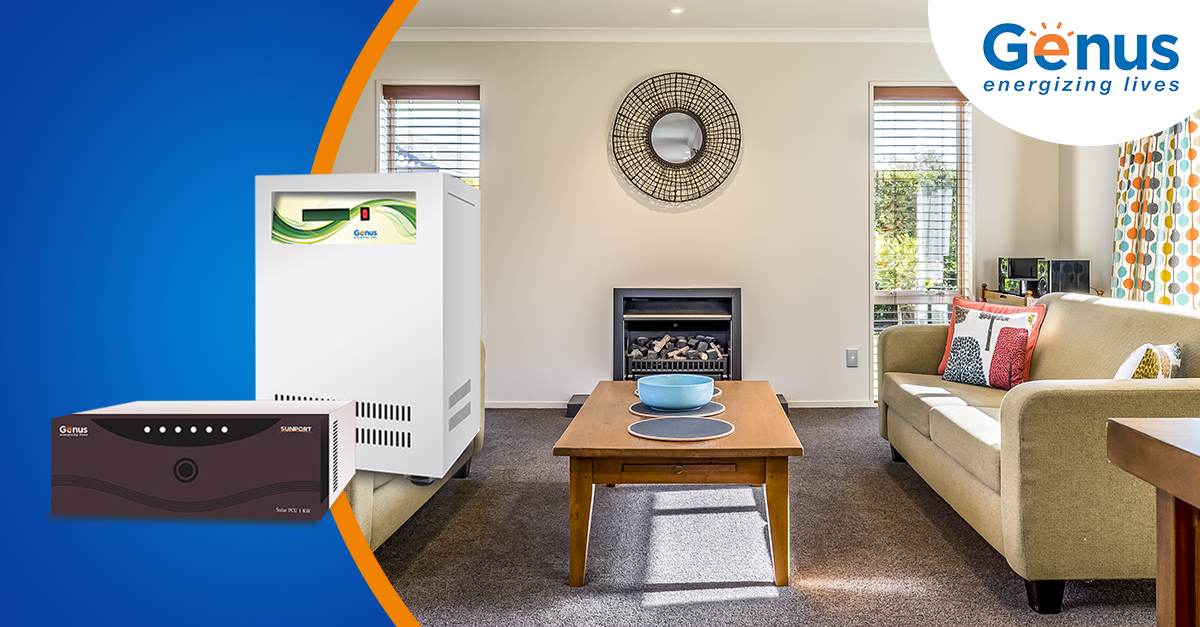
Power failures are among the worst things that can happen to most of us when we are at the office or simply lazing around at home. They are quite frustrating, as we lose precious hours sitting in the dark or suffering due to the unpredictable weather. If you have longed for an alternative to looking out the window to see if the transformer is being fixed or calling the electricity department to no avail, inverters are the answer.
But not all inverters are created equal. Let us explore what inverters are and go on to the factors you need to consider, to buy the best one for your needs.
What is An Inverter?
An inverter is a backup power generating device that will keep your essential gadgets running even during power outages. It works by converting low-voltage DC into household AC.
Do You Need An Inverter?
If your locality experiences frequent power cuts, you most likely need an inverter. Once you have decided this, you will have to zero in on what kind you need. To determine that, let us first walk you through how to figure out your power requirement.
Step 1
Calculating the Rower Requirement of Your Home/workspace
Power requirement is the amount of electricity that you need to run the relevant appliances during the time of a power failure.
Calculating this is fairly simple. Imagine you have 3 fans, 3 tube lights, 1 CFL, and 1 TV.
| Appliances | Wattage |
| Tube lights | 60 |
| Scanners (1) | 35 |
| LED | 30 |
| Fans | 70 |
| Printers | 100-350 |
| Audio system | 500 |
| Tube light | 60 |
| Plasma/ LCD TV | 120 |
Here, your power requirement will be 3X70+3X60+25+1X20=535 WATTS.
Step 2
How to Pick the Best Battery?
The Basics—What is a Battery and What are Its Types
A battery is the inverter’s backbone, so its quality determines the lifespan and performance of the inverter.
Generally, there are three types of inverter batteries.
- Maintenance-free batteries
- Tubular plate batteries
- Lead-acid batteries
Let us delve into each of them individually.
1. Maintenance-Free Batteries
These are sealed lead acid batteries that do not require topping up or an electrolyte level check. Compared to regular lead-acid batteries, they are much safer. However, it is also worth noting that maintenance-free batteries have a shorter lifespan and are costlier.
2. Tubular Plate Batteries
Given how long-lasting these are, tubular plate batteries are the most popular type. They are quite valuable in areas where power outages tend to last for long.
3. Lead-Acid Batteries
These are cost-effective and last for up to four to five years if they are maintained properly in a well-ventilated part of your home. They are rechargeable, but they require maintenance; Lead-acid batteries need to be regularly topped up, and the level of electrolyte also needs constant supervision.
Now, which of these is ideal for your requirement?
The battery capacity that you require, which is measured in Ampere hours, can be found with a simple formula based on your appliances’ backup time.
The first thing to consider while evaluating a battery is the amount of time you need your appliances to run. If you need it to run for three hours, the calculation will be as follows:
Battery size = (total load in watts X hours for which backup is needed)/ system voltage of inverter x battery depth of discharge x efficiency of the inverter)
So,
Battery size= (535×3)/ (12×0.8×0.8) =200 Ah.
Step 3
Sine Wave vs Square Wave Inverter—Which Works Best for You
Experts at Genus recommend that you pick sine wave inverters despite the high price tag. They are safer and more long-lasting. In the market, you can also purchase modified sine wave inverters for a lower price.
Step 4
Optimal VA Rating for the Inverter to be Useful for You
To find the VA rating that you need, divide the total load that needs supporting by the power factor, which is a measure of the efficiency lost when DC power becomes AC. The inverter capacity is measured in Volt Ampere.
VA rating for the inverter or power supplied = power consumed by your equipment calculated in watt/ power factor.
Here, the power factor is taken as 0.7.
From our previous example, we get VA= 535/0.7= 765 VA
In this case, VA rating of 765 to 800 will be apt for you.
Step 5
Better Battery Warranty
Since inverter batteries get damaged easily, it is prudent to get a battery that has a longer warranty.
Some Final Thoughts
Now that you have gained the necessary knowledge from this inverter purchase guide, you can proceed to buy an inverter that is optimal for your power needs. Being the informed customer that you are, you are guaranteed to pick one that keeps your family cozy during power outages.
